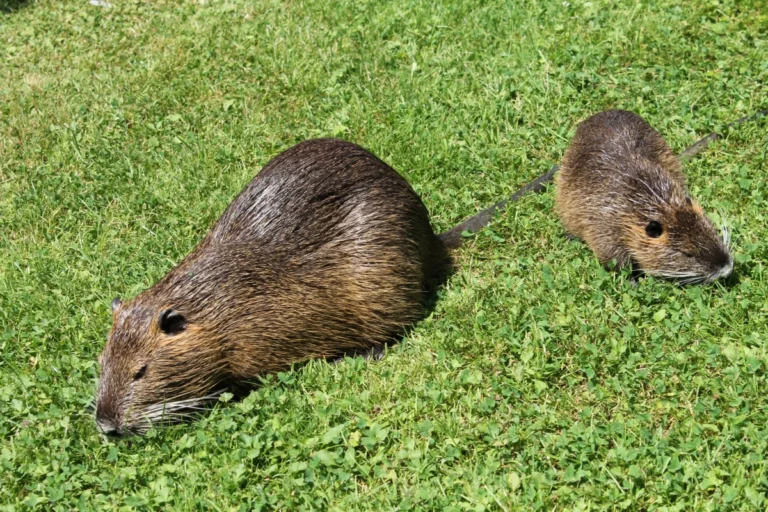Stormwater Pollution Meaning, Facts, Effects, and Solutions
Stormwater pollution is simply the process by which stormwater becomes polluted.
Stormwater is water derived primarily from precipitation, and which usually contains impurities transported along the flow path.
This article discusses stormwater pollution from the following perspectives;
-Stormwater Pollution Meaning: 8 Ways to define Stormwater Pollution
-Stormwater Pollution: Polluted Stormwater and its Contaminants
-Five (5) Effects of Stormwater Pollution and General Stormwater Dynamics
-Eight (8) Solutions to the Problem of Stormwater Pollution
Stormwater Pollution Meaning: 8 Ways to define Stormwater Pollution
Stormwater pollution is the introduction of foreign materials into stormwater as it flows on the ground as runoff, or as it is drained using designated infrastructure.
The impurities in polluted stormwater are of various types, and derived from various sources. These criteria can be used to define the concept, as follows;
Stormwater pollution is the process by which significant amounts of contaminants like particulates, municipal solid waste, and chemicals, are introduced into stormwater from soil, waste disposal sites, construction sites, and industrial outlets.
Pollution of stormwater usually occurs by a sequential process. The description of this process can be used to define stormwater pollution;
Stormwater pollution is a process involving precipitation without infiltration, whereby water flows as runoff, over an impervious surface; eroding, accumulating and transporting foreign materials from waste disposal sites, spillages, mines and industries, in a progressive manner over time.
Because of the mobility of polluted stormwater, it is also referred to as runoff. However, stormwater does not always run over impervious surfaces. The following definition expresses the relationship between pollution of stormwater, erosion and soil conservation;
Stormwater pollution is a phenomenon which may occur in areas where soil conservation is not practiced effectively, allowing runoff from precipitation, to erode and transport debris and other foreign materials, thereby becoming polluted.
Another perspective which can be used to define stormwater contamination is the context of urban systems, as follows;
Pollution of stormwater is the process by which precipitation (rain, snow, etc.) flows over roads, pavements, roofs, and other surfaces within an urban or semi-urban catchment area, assimilating and transporting impurities from various sources as a result.
Beyond urban and semi-urban environments, stormwater pollution affects the entire ecosystem. An ecological point of view describes the concept as follows;
Stormwater pollution is the introduction of foreign materials into precipitation-derived water as it flows through the watershed and catchment areas of the ecosystem [8].
The definition of stormwater pollution based on flow dynamics is given below;
Stormwater pollution is the assimilation and transportation of impurities by precipitation water as it flows as runoff, from a point of origin to a drain or larger water body.
Lastly, stormwater pollution can be defined based on its potential effects;
Stormwater pollution refers to the process(es) by which foreign materials pollute a body of stormwater as it flows, leading to erosion, environmental degradation, habitat destruction, health problems and natural hazards like flooding.
Stormwater Pollution Facts
Some simple facts about stormwater runoff and pollution are s follows;
1). Stormwater runoff results from precipitation, which may be rainfall or melted snow
2). Pollution of stormwater is most common and feasible in urban areas, because of the presence of impervious ground covering such as flexible pavements. In natural land areas, stormwater pollution is less likely as runoff will be absorbed by the soil
3). Stormwater pollution requires a flow gradient, and long distance of flow. This enables runoff to travel over long distances
4). The degree of pollution and potential damage of stormwater increases with its volume and velocity
5). Risk of pollution of stormwater increases with population growth and urban development
6). Groundwater can be impacted by stormwater pollution, when stormwater infiltrates the aquifer through percolation. This can cause groundwater contamination in extreme cases
7). Stormwater pollution often comes from non-point sources, because pollutants are introduced from multiple and random points
8). A variety of types of pollutants are introduced into stormwater runoff. Some common examples of stormwater pollutants are particulates, suspended solids, metals, coliform, organic matter, and inorganic minerals
9). Stormwater pollution can worsen the challenges involved in municipal waste management, by dispersing waste materials from disposal facilities to other areas
10). Soil conservation is less effective in areas where pollution of stormwater is a huge problem, because of the tendency to erode and pollute soil. This can affect agriculture negatively
11). Pollution of stormwater is directly related to global warming and climate change because these events cause sea level rise and increase in precipitation
12). Aquatic ecosystems are affected by stormwater pollution through the influx of pollutants into water bodies, thereby affecting organisms
Stormwater Pollution: Polluted Stormwater and its Contaminants
Polluted stormwater is runoff from precipitation events which has accumulated organic and inorganic materials (pollutants) along its flow path.
This phenomenon is commonly associated with extreme precipitation events like storms [14]. The formation of polluted stormwater requires some conditions such as impervious flow path, high velocity of flow, long distance transport, and presence of pollutants in the flow path.
Three pollutants commonly contained in stormwater are sediments, hydrocarbons, and heavy metals.
Sediments in stormwater are silts, sand, and gravels picked up as the water flows over impervious surfaces. They may also be derived as a result of erosion [11]. The type and volume of sediments in stormwater depend on the flow velocity of the water.
Hydrocarbons in stormwater may occur in the form of petroleum, polyesters, herbicides and pesticides. These pollutants are picked up from oil spills, exploration and mining sites, and industrial outlets.
Heavy metals in stormwater include copper, cadmium, lead, chromium and zinc [10]. They are often picked up from roadways as products of fuel combustion and other processes. Heavy metals in stormwater usually occur in a dissolved state, and can cause aquatic pollution as well as health problems [5].
Biomass can also occur as a pollutant in stormwater, in the form of sewage, food waste, and organic debris. Other pollutants in stormwater include ammonia, mercury and phosphate.
The two main processes by which stormwater pollution occurs, are erosion and transport. Erosion occurs when stormwater runoff forcibly removes materials from their original position. This is similar to erosion which is a part of the geologic cycle by which sedimentary rocks are formed [3].
Transport is the continuous mobilization of such materials which have been introduced into the stormwater runoff.
There are different methods by which stormwater runoff transports foreign materials. These methods depend on the physicochemical characteristics of the materials, and include saltation, suspension, traction and solution.
Five (5) Effects of Stormwater Pollution and General Stormwater Dynamics
1). Stormwater Pollution Causes Erosion
Erosion is one of the main processes which occur as stormwater runoff travels from one point to another.
It involves the physical removal of materials like sediments, from their original position. The severity of erosion depends on the velocity and volume of stormwater [2].
Erosion can have significant impact on the environment. It is a common problem in construction sites, and causes the removal of important aggregate materials from the site.
Highways can also be affected by erosion, which can lead to degradation of the infrastructure.
In natural catchment areas, erosion as a result of stormwater runoff (in the process of stormwater pollution) can destroy banks, leading to the loss of habitats within the aquatic ecosystem.

2). Flooding
Stormwater causes flooding especially in urban and suburban regions [4].
This is due to the presence of impervious surfaces like pavements, that reduce the tendency and capacity of absorption. Because stormwater carries foreign materials, it tends to clog drainage systems as well, leading to erosion.
Flooding is a natural hazard which can destroy important infrastructure and lead to significant economic losses. It can also destroy terrestrial habitats.
3). Stormwater Pollution causes Environmental Degradation
Pollution of stormwater is linked to environmental degradation, which may affect both soil and water.
Pollutants which are being carried by stormwater may be transported into water bodies and soil. Surface water bodies like rivers and streams are susceptible to degradation by polluted stormwater runoff [1], which may flow into these aquatic systems, carrying pollutants along with them.
Stormwater may transport toxic materials like pesticides, fertilizer and heavy metals, into formerly unpolluted soil, thereby causing degradation. Municipal waste may also be transported and dispersed in various places by stormwater.
4). Growth of Toxic Algal Blooms and Loss of Aquatic Life
In the process of stormwater pollution, runoff can transport nutrients into water bodies.
These nutrients may be derived from various sources, including organic matter through biodegradation, inorganic pollutants, and fertilizer.
When such nutrient-carrying stormwater flows into streams and rivers, eutrophication may occur. This may lead to excessive growth of harmful algae in the water, and may pose a threat to the survival of aquatic organisms [15].
In turn, when aquatic organisms die in large numbers, it causes pollution. Other forms of organic matter from polluted stormwater can also cause aquatic degradation, due to problems like excessive biological oxygen demand (BOD) by microorganisms carrying out biodegradation, and excessive production of minerals as organic matter is broken down.
When pollutants like sediments, particulates, and heavy metals are introduced into aquatic ecosystems by polluted stormwater, they can cause bioaccumulation in aquatic organisms as these organisms ingest the pollutants over time.
Health problems and mortality may result from such a scenario as described, both in the aquatic organisms themselves, and in organisms in other tropic levels of the energy pyramid which depend on these aquatic organisms as a source of food.
5). Property Damage
Because stormwater runoff causes flooding and erosion, it is also associated with damage of public and private property.
This may occur through the inundation, flooding and collapse of structures, through forceful removal, or through gradual degradation and disintegration.
Property damage by stormwater is most common in urban and suburban regions, where the flow surfaces are mostly impervious and do not drain or absorb runoff.

Eight (8) Solutions to the Problem of Stormwater Pollution
Some ways to prevent and mitigate the effects of stormwater contamination and pollution are;
1). Effective Waste Management
There are various reasons why effective waste management can help control stormwater pollution.
One of these is the fact that waste (industrial, municipal, agricultural) is a major source of pollutants found in stormwater runoff [9]. These materials are usually carried from disposal sites by stormwater as it travels along its flow path.
Another reason is the fact that improperly-managed waste can worsen the effects of stormwater runoff by clogging drains and waterways, leading to flooding, as well as health problems, environmental degradation and other natural hazards such as landslides.
Effective waste management is itself one of the necessary measures to achieve sustainable development [6]. Recycling of waste materials is an aspect of waste management, alongside the use of biodegradable plastics and other eco-friendly products.
Environmental remediation can also be viewed as an aspect of waste management, because it helps to remove potentially harmful waste materials like hydrocarbons and heavy metals from the environment. These pollutants, if not removed, can be transported and dispersed across a wider area by stormwater.
2). Soil Conservation can be used to Control Stormwater Pollution
Soil conservation practices like crop rotation and cover cropping can mitigate stormwater pollution [7].
This is because soil conservation improves the stability, quality and resilience of soil. It also reduces the risk of erosion, which is one of the problems associated with stormwater contamination.
Through the conservation of soil, precipitation is absorbed more readily because the moisture retention capacity of the soil will improve. Chemicals in soil will also be reduced, implying that runoff will be less contaminated.
3). Drainage Infrastructure Maintenance can help to Control Stormwater Pollution
The construction and maintenance of drainage infrastructure helps to control or mitigate pollution of stormwater.
Such infrastructures include septic systems, erosion-control systems, barriers and diversion structures, among others. Some functions of these infrastructure are stormwater flow diversion, drainage, and pollutant exclusion.
4). Sustainable Transport and Energy Conservation
Fossil fuels are a major cause of stormwater pollution [13].
As a result, controlling the use of these fossil fuels through energy conservation and sustainable transport, is a means of addressing stormwater pollution.
Sustainable transport can be achieved by implementing various measures. One of these is the maintenance of fossil fuel-dependent vehicles. Problems like leaks and incomplete combustion can be handled through effective maintenance, thereby reducing hydrocarbon pollutants in the environment.
Renewable energy options can also be explored to mitigate the problem of hydrocarbon pollution. Solar, hydro, bio-energy, wind and geothermal technologies can be used to generate electricity, while fossil fuel vehicles can be replaced by electric vehicles, which are a cleaner alternative.
5). Stabilization and Protection of Key Areas
Some examples of key areas where stabilization and protection are needed in order to control stormwater pollution, are slopes, agricultural lands, river banks, drain inlets and outlets, channels, wetlands, catchments, treatment facilities and pollution traps.
By stabilizing and protecting such areas, the risk of occurrence as well as the effects of stormwater pollution, can be mitigated.
Stabilization and protection can be achieved by setting up barriers, building terraces, cultivating cover crops, rehabilitating structures and system components, improving treatment processes and expanding drainage facilities.

6). Optimal Agricultural Practices can Prevent and Control Stormwater Pollution
An example of a good agricultural practice that can mitigate stormwater pollution is the use of organic fertilizer.
This is mainly because using organic fertilizer reduces the dependence on chemical ones. When chemical fertilizers are used in a conservative manner the risk of stormwater pollution in such areas is reduced.
Optimal agricultural methods can also reduce the dependence on synthetic pesticides, which are yet another cause of the pollution of stormwater.
Another example of a good agricultural practice for mitigating stormwater pollution is controlled livestock grazing. When livestock grazing is controlled, the risk of erosion is reduced [12]. This means that sediments in stormwater will also reduce.
Lastly, proper handling of agricultural waste can reduce the risk of these materials being transported away by stormwater runoff.
7). Urban Development Programs should be designed with Consideration of Stormwater Runoff
Because stormwater pollution is a major problem in urban areas, the control of stormwater runoff must be considered when creating a development scheme for any urban region.
In addition to providing the needed infrastructure for drainage, protection and stabilization of key areas, such programs should ideally include a schedule for managing stormwater runoff at various times of the year.
Impervious surfaces should be replaced by more permeable ones in various parts of the urban region, to allow for infiltration and drainage. Other factors which should be considered when creating an urban development scheme are the slope or topography, drainage, potential population, land use, and climatic conditions of the area.
8). Implementation of an Effective Stormwater Pollution Prevention Plan (SWPPP)
A Stormwater Pollution Prevention Plan (SWPPP or SWP3) is a documented scheme designed to identify and predict the potential occurrence of stormwater pollution in a given area, and to select appropriate measures with which these events can be prevented or controlled.
Every major development project requires an SWPPP to address stormwater-related issues. The plan usually covers several measures for preventing pollution of stormwater, like drainage system construction/maintenance, slope stabilization, and waste management.
It may also include environmental remediation schemes to mitigate the effects of polluted stormwater.
Conclusion
Pollution of stormwater is the process by which runoff from precipitation, erodes and transports foreign materials, resulting in environmental degradation.
Effects of stormwater pollution are;
- Erosion
- Flooding
- Environmental Degradation
- Growth of Toxic Algal Blooms and Loss of Aquatic Life
- Property Damage
Potential solutions and control measures for pollution of stormwater are;
- Effective Waste Management
- Soil Conservation
- Drainage Infrastructure Maintenance
- Sustainable Transport
- Energy Conservation
- Stabilization and Protection of Key Areas
- Optimal Agricultural Practices
- Urban Development Programs
- Stormwater Pollution Prevention Plan (SWPPP)
References
1). Barałkiewicz, D.; Chudzińska, M.; Szpakowska, B.; Swierk, B.; Gołdyn, R.; Dondajewska-Pielka, R. (2014). “Storm water contamination and its effect on the quality of urban surface waters.” Environmental Monitoring and Assessment 186(10). Available at: https://doi.org/10.1007/s10661-014-3889-0. (Accessed 23 May 2022).
2). Bisschop, R.; Visser, P. J.; van Rhee, C.; Verhagen, H. J. (2010). “Erosion due to high flow 4). velocities: A description of relevant processes.” Coastal Engineering Proceedings. Available at: https://doi.org/10.9753/icce.v32.sediment.24. (Accessed 23 May 2022).
3). Fernandes, I.; Broekmans, M. A. T. M.; Ribeiro, M. A.; Sims, A. (2016). “Sedimentary Rocks.” Petrographic Atlas: Characterisation of Aggregates Regarding Potential Reactivity to Alkalis (pp.43-101). Available at: https://doi.org/10.1007/978-94-017-7383-6_3. (Accessed 23 May 2022).
4). Gupta, A. K. (2016). “Stormwater Drainage and Urban Flood Mitigation: Lateral Solutions.” Available at: https://www.researchgate.net/publication/309770187_Stormwater_Drainage_and_Urban_Flood_Mitigation_Lateral_Solutions. (Accessed 23 May 2022).
5). Isiuku, B. O.; Ebere, E. C. (2019). “Water pollution by heavy metal and organic pollutants: Brief review of sources, effects and progress on remediation with aquatic plants.” Analytical Methods in Environmental Chemistry Journal. Available at: https://doi.org/10.24200/amecj.v2.i03.66. (Accessed 23 May 2022).
6). Izvercian, M.; Ivascu, L. (2015). “Waste Management in the Context of Sustainable Development: Case Study in Romania.” Procedia Economics and Finance 26:717-721. Available at: https://doi.org/10.1016/S2212-5671(15)00825-4. (Accessed 23 May 2022).
7). Kumawat, A.; Yadav, D.; Kala, S.; Rashmi, I. (2020). “Soil and Water Conservation Measures for Agricultural Sustainability.” Soil Moisture Importance. Available at: https://doi.org/10.5772/intechopen.92895. (Accessed 23 May 2022).
8). Li, D.; Wan, J.; Ma. Y.; Wang, Y.; Huang, M.; Chen, Y. (2015). “Stormwater Runoff Pollutant Loading Distributions and Their Correlation with Rainfall and Catchment Characteristics in a Rapidly Industrialized City.” PLoS ONE 10(3):e0118776. Available at: https://doi.org/10.1371/journal.pone.0118776. (Accessed 23 May 2022).
9). Marques, M. (2007). “Stormwater Runoff Pollution at Waste Management Sites.” Urban Water Journal 4(3):173-181. Available at: https://doi.org/10.1080/15730620701408668. (Accessed 23 May 2022).
10). Milik, J.; Pasela. R. (2018). “Analysis of concentration trends and origins of heavy metal loads in stormwater runoff in selected cities: A review.” E3S Web of Conferences 44(1):00111. Available at: https://doi.org/10.1051/e3sconf/20184400111. (Accessed 23 May 2022).
11). Perez, M.A.; Zech, W. C.; Donald, W. N.; Turochy, R.; Fagan, B. G. (2019). “Transferring Innovative Erosion and Sediment Control Research Results into Industry Practice.” Water 11(12):2549. Available at: https://doi.org/10.3390/w11122549. (Accessed 23 May 2022).
12). Sanjari, G.; Yu, B.; Ghadiri, H.; Ciesiolka, C. A. A.; Rose, C. W. (2009). “Effects of time-controlled grazing on runoff and sediment loss.” Australian Journal of Soil Research 47(8). Available at: https://doi.org/10.1071/SR09032. (Accessed 23 May 2022).
13). Selman, M.; Greenhalgh, S. (2010). “Eutrophication: Sources and drivers of nutrient pollution.” Renewable Resources Journal 26(4):19-26. Available at: https://www.researchgate.net/publication/287774312_Eutrophication_Sources_and_drivers_of_nutrient_pollution. (Accessed 23 May 2022).
14). Sharma, A. K.; Vezzaro. L.; Birch. H.; Arnbjerg-Nielsen, K.; Mikkelsen, P. S. (2016). “Effect of climate change on stormwater runoff characteristics and treatment efficiencies of stormwater retention ponds: a case study from Denmark using TSS and Cu as indicator pollutants.” SpringerPlus 5(1):1984. Abailable at: https://doi.org/10.1186/s40064-016-3103-7. (Accessed 23 May 2022).
15). Wurtsbaugh, W.; Paerl, H. W.; Dodds, W. K. (2019). “Nutrients, eutrophication and harmful algal blooms along the freshwater to marine continuum.” Wiley Interdisciplinary Reviews: Water 6(5):e1373. Available at: https://doi.org/10.1002/wat2.1373. (Accessed 23 May 2022).



